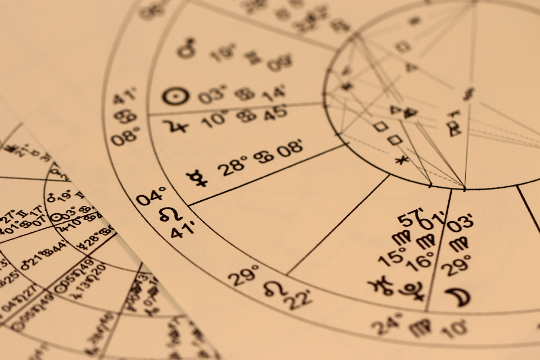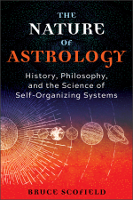
Image from Pixabay
For most people today, the zodiac is all there is to astrology and your “sign” (Sun-sign) is your “horoscope.” Of course, a delineation for your Sun sign is not a horoscope and is exactly the same for anyone born under that sign. This kind of popular astrology is to the entire field of astrology as the “Dear Abby” column is to the entire field of psychology.
Astrology in Scientific Studies
Given that the zodiac gets so much attention, how has it tested out in real scientific studies? There are a few things that need to be made clear in understanding the studies that have been done.
The tropical zodiac is the one usually tested because it is what nearly all Western astrologers use. Because it is the steady, annual apparent motion of the Sun that makes the zodiac, knowledge of a person’s Sun-sign only requires a birth day, not even a year. Knowledge of one’s Ascendant, Midheaven, Moon, or planet signs is rare among the general population in part because they must be calculated and, because birth times are often unknown, most scientific tests of the tropical zodiac are limited to just Sun signs.
The problems inherent in testing astrology are complex, and a very good case can be made that just a few self-appointed defenders of the status quo exert a disproportionate effect on the perception of such studies, this being another example of how a single person, like Mersenne, Anslinger, or Murdock, can almost single-handedly steer the course of events in their time, with enormous repercussions for generations that followed (McRitchie 2016).
Since, so far, the only strong evidence for natal astrology is statistical, and statistics are suspect at best and befuddling at worst, it has come down to one side claiming victory and the other crying foul. It may be more productive to consider possible mechanisms and then devise models that can be tested, rather than mix psychology’s apples with astrology’s pomegranates and give astrologers baffling mix-and-match quizzes.
Experiments I Tried At Home
Without the funding and institutional support needed for rigorous research, what’s an astrologer to do? Mostly assemble data and correlate planets with behaviors and events, it seems. What passes for research in the larger astrological community are anecdotal studies, and there are plenty of them. These compilations of correlations (or pattern observations) are cheap and can get a practitioner published, but they aren’t much of an improvement over what Valens, Cardano, Gadbury, and others were doing centuries ago. Another variant of low-budget research are reports on personal field observations.
For much of the 1970s I played rock music in a bar-band several nights a week, usually from nine o’clock at night to one o’clock in the morning. While the band played more or less the same material each night, it became apparent to me that audience interest and reactions varied considerably from night to night.
I began to keep records of the times during the gig that the band-audience connection was particularly strong and enthusiasm high; the next day I would calculate planetary positions and look for correlations.
What I found was that audience interest had a correlation to the Moon (its sign and aspects) and that moments of intense interactions correlated to the Moon or a planet either rising/setting or culminating (upper and lower), more or less in the Gauquelin zones. Taking the study further, I adjusted a pocket watch so that it ran four minutes fast per day and set twelve o’clock to zero hour Greenwich Mean Time. This allowed me to read local sidereal time, track the rotation of Earth, and also track the diurnal cycles of the planets.
With this device, and a prepared list of the sidereal times that planets would occupy these four positions (the angles) for each night, I could then observe in real time variations in crowd behavior. (Today there are apps that do all of this instantly on a phone.)
One observation was that the size of the audience mattered: with fewer people, group response was inconsistent, but a kind of human quorum sensing kicked in with large groups, and these followed the angularities of the Moon and planets in behavior quite closely.
My observations eventually produced knowledge that informed choices (an exercise of free will) regarding the best time to play a certain song and also when the band should take a break. Useful information, but lacking units and a figure for probability.
Over the next decades my field observations became more sophisticated and were extended to many other behaviors, individual and group. I obtained an astronomer’s sidereal watch, which made things a bit easier, and memorized the sidereal times that the positions of each of my natal planets, Sun, and Moon would cross the angles in their diurnal cycles (these crossing points shift four minutes earlier each day and cycle through the year).
I would then make observations of what might be called micro events and trends. While attending astrology conferences I was able to obtain the birth data of many friends and acquaintances, and I stored this information in notes. Then, while sitting in the back of large lecture rooms during long lectures, I would observe when any of these “subjects” got up and left for a snack or visit to the rest room.
It became apparent to me that people were having (presumably) involuntary responses when the angles coincided with significant positions in their natal chart. In more than a few cases I was able to predict exactly when one of the subjects would get up for a break, a feat (some might say an invasion of privacy) for which I earned a reputation.
The Timing of Events
Computers became available in the late 1970s and soon software made the calculations easier. My friend Barry Orr wrote a program that displayed these angle crossings with a special emphasis on the simultaneous angularity (rising, setting, and upper and lower culmination) of two or more planetary bodies, these being called parans, short for the Greek word paranatellona. I used this information to do personal experiments on event initiation.
For example, one ongoing study involves the effects of leaving my house to run errands at specific times. Over several decades I have left to run errands, take multi-day backpacking trips, and begin air travel vacations either without thinking about it (the controls),or by making a conscious choice based on the angularity of planets (the experiments), recording my observations in either case.
It became apparent early on that leaving when Saturn was angular nearly always correlated with delays or restrictions, but not so with Jupiter. I extended my observations to other people, asking them to only give me the time they left on a trip, and noted similar patterns.
In 1980, about a decade into the study, I wrote a book (The Timing of Events) reporting on what I had found and how to apply it, but the project has continued into the present. These field studies are both a subjective and objective test of electional astrology—you learn something about the temporal environment and then you use this knowledge, so it's also an application of free will.
Medical Astrology
Another set of field observations has relevance to a biological connection to the diurnal cycle of the planets and zodiac. Following a bad accident, two surgeries, and a series of iatrogenic problems, I was left in a condition where some parts of my body system were damaged and displayed symptoms that appeared in unpredictable and completely involuntary ways.
Tracking the causal chain of events from a behavior (moving a certain way, eating a particular food, etc.) to a symptom proved complicated, so I decided to keep detailed records. (This exercise might be called autoastrometry.)
Over time I found that symptom flare ups did correlate with certain behaviors—but these were always timed and apparently amplified by transiting planets to my natal chart. Specific events or points in the diurnal cycle, most often lunar angularity or the angularity of the zodiacal degrees of my natal Moon and Ascendant, were observed to correlate with sudden flareups. While behavioral triggers could be linked to symptoms (i.e., physio-chemical cause and effect), just as often planetary signals alone would correlate with symptom flareups, which makes the mapping of causality in the body very difficult.
What I found was that, when my physical condition was chaotic, my symptoms correlated strongly with astrological aspects. But when my body was stable and able to tolerate interruptions trigger behaviors) and symptoms were absent, predictable circadian rhythms were dominant.
What this suggests to me is that when my system was chaotic, it was not only more sensitive to identifiable triggers such as food or stress, but it was also sensitive to the positions of the current planets. The take-home point here is that my body, specifically the nervous system and the microbiome, appears to respond to both behavior triggers and planetary signals in ways that are not consciously controlled.
This finding complicates medical diagnosis in regard to cause and effect, but it is not really new knowledge. These observations fall into the category of medical astrology but are also relevant to the subdiscipline chronopharmacology that Franz Halberg pioneered.
©2023 Bruce Scofield - all rights reserved.
Adapted with permission of the publisher,
InnerTraditions Intl www.innertraditions.com
Article Source:
The Nature of Astrology: History, Philosophy, and the Science of Self-Organizing Systems
by Bruce Scofield. While astrology is now mostly viewed as subjective fortune-telling, Bruce Scofield argues that astrology is not only a practice but also a science, specifically a form of systems science--a set of techniques for mapping and analyzing self-organizing systems.
While astrology is now mostly viewed as subjective fortune-telling, Bruce Scofield argues that astrology is not only a practice but also a science, specifically a form of systems science--a set of techniques for mapping and analyzing self-organizing systems.
Presenting a broad look at how the cosmic environment shapes nature, the author shows how the practice and natural science of astrology can expand its applications in modern society in such varied fields as medicine, history, and sociology.
Click here for more info and/or to order this book.
About The Author
 Bruce Scofield holds a doctorate in geosciences from the University of Massachusetts, a master’s degree in social sciences from Montclair University, and a degree in history from Rutgers University. Currently an instructor for Kepler College and president of the Professional Astrologers Alliance, he is the author of 14 books. Bruce (b. 7/21/1948) began studying astrology in 1967 and has earned a living as an astrological consultant since 1980.
Bruce Scofield holds a doctorate in geosciences from the University of Massachusetts, a master’s degree in social sciences from Montclair University, and a degree in history from Rutgers University. Currently an instructor for Kepler College and president of the Professional Astrologers Alliance, he is the author of 14 books. Bruce (b. 7/21/1948) began studying astrology in 1967 and has earned a living as an astrological consultant since 1980.
You can contact him through his web site: NaturalAstrology.com/


























